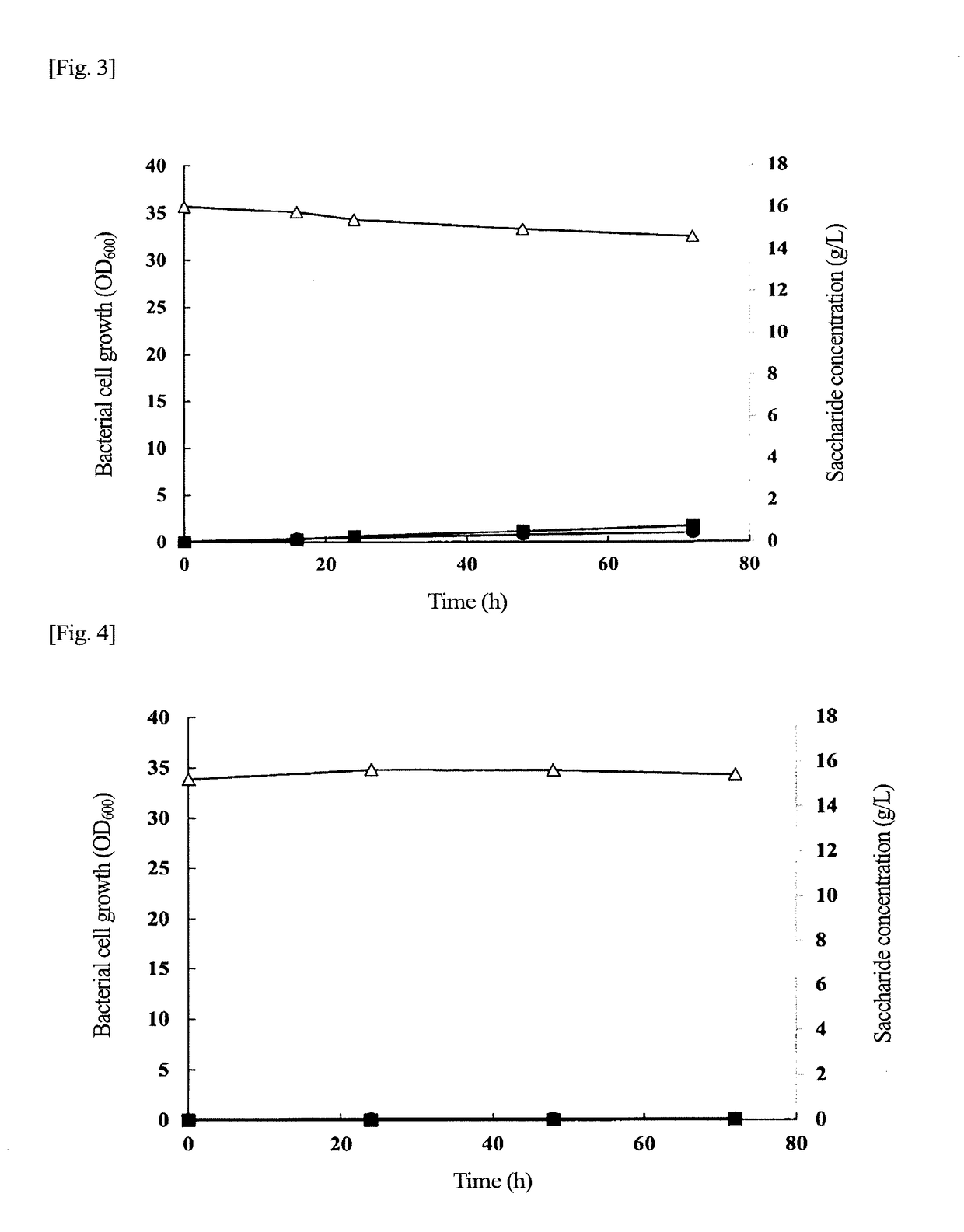Pha-producing microorganism having sucrose assimilability, and method for producing pha using said microorganism
a technology of sucrose assimilation and microorganisms, which is applied in the direction of enzymology, peptides, transferases, etc., can solve the problems of large proportion of carbon source costs in production costs, high production costs of the resultant, and relatively expensive carbon sources
- Summary
- Abstract
- Description
- Claims
- Application Information
AI Technical Summary
Benefits of technology
Problems solved by technology
Method used
Image
Examples
examples
[0058]Hereinafter, the present invention will be described in detail by way of working examples thereof. However, the invention is not limited by these examples. General genetic manipulations can be performed as described in Molecular Cloning (Cold Spring Harbor Laboratory Press (1989)). Any enzyme, any cloning host, and any other that are used in the genetic manipulations are commercially available from suppliers in the market, and are usable in accordance with their manual. The enzyme is not particularly limited as long as the enzyme is an enzyme usable for genetic manipulation.
[0059]A KNK005ΔphaZ1,2,6 strain used in production examples, the working examples, and comparative examples described below is a transformant in which a phaZ1,2,6 gene on a chromosome of a C. necator H16 strain is deleted and to which a PHA synthase gene (gene encoding a PHA synthase having an amino acid sequence described in SEQ ID NO: 4) derived from Aeromonas caviae is introduced, and can be produced in ...
PUM
| Property | Measurement | Unit |
|---|---|---|
| resistance | aaaaa | aaaaa |
| voltage | aaaaa | aaaaa |
| electrostatic capacitance | aaaaa | aaaaa |
Abstract
Description
Claims
Application Information
 Login to View More
Login to View More - R&D
- Intellectual Property
- Life Sciences
- Materials
- Tech Scout
- Unparalleled Data Quality
- Higher Quality Content
- 60% Fewer Hallucinations
Browse by: Latest US Patents, China's latest patents, Technical Efficacy Thesaurus, Application Domain, Technology Topic, Popular Technical Reports.
© 2025 PatSnap. All rights reserved.Legal|Privacy policy|Modern Slavery Act Transparency Statement|Sitemap|About US| Contact US: help@patsnap.com



